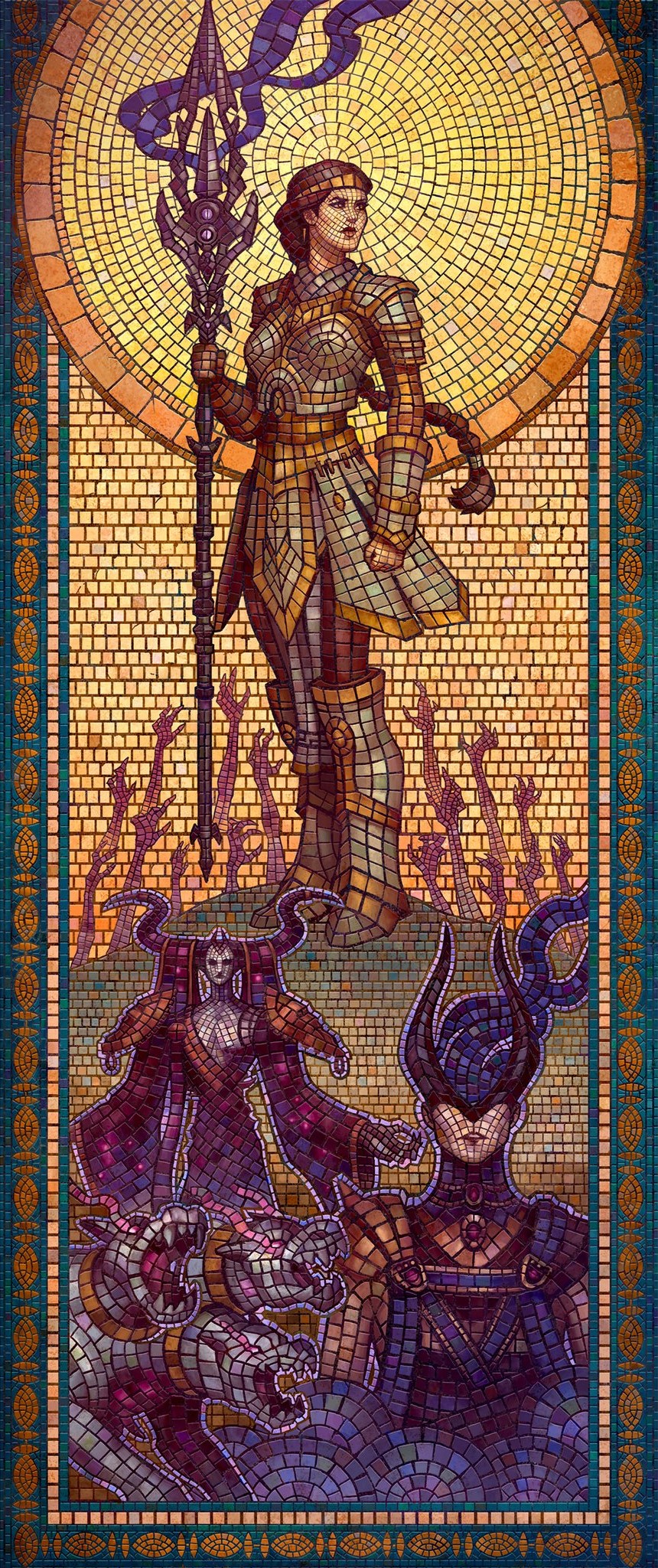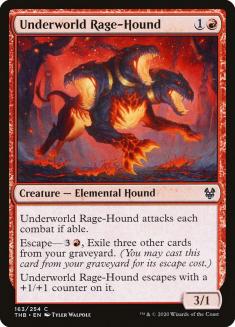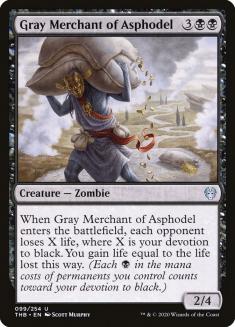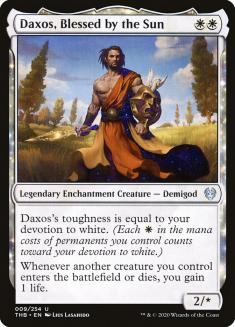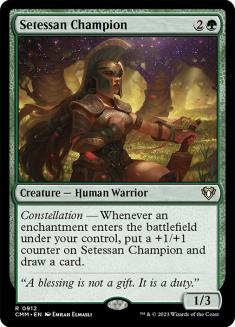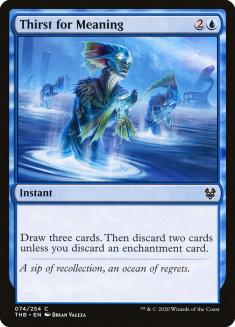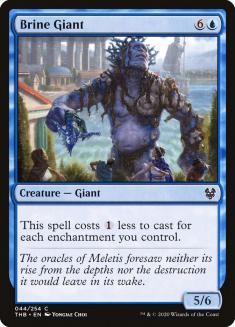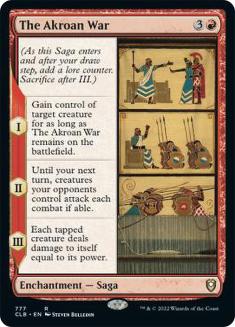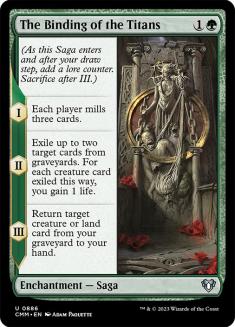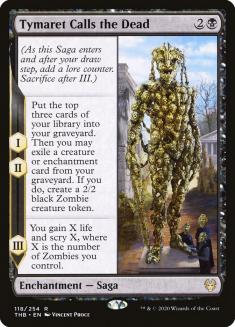The weeks prior to a set release are the most exciting weeks of the year. Evaluating new cards and mechanics can be difficult, but honing card evaluation skills is the best way to get an edge early in a format. This is especially important given that MagicFest New Jersey is only a few weeks away.
Theros Beyond Death brings back favorite mechanics from the original Theros block: devotion and constellation. Additionally, Dominaria’s Saga card subtype is back to play into the enchantment theme in Theros Beyond Death. Lastly, there’s escape, the new mechanic on the block!
Escape
I hope the designers were careful with escape, because it’s dangerously powerful. Repeatable graveyard recursion almost always goes awry and I don’t expect escape to be any different. The design of Elspeth, Sun’s Nemesis demonstrates that the designers had the power level of this mechanic in mind, while also designed for cool interactions (e.g. a planeswalker that easily puts itself into the graveyard for value recast). That card is good, but not broken-level stupid. But in terms of Theros Beyond Death Limited, how does the existence of escape affect the ecosystem?
Whenever a marquee mechanic of a set is built-in card advantage, it has a large impact on the Limited environment. In most cases, this slows down the speed of the format because the incentive to play for the late-game increases. However, this is not always the case. Adventures in Throne of Eldraine increased the speed of the format because an overwhelming majority of Adventure creatures had built-in combat tricks. This meant aggressive decks were built with both a high creature count and a density of combat tricks, something that is rarely possible in Limited.
I believe escape will provide interesting tension between the fast and slow decks, while overall favoring slow decks. Historically, trading favors the defender, and escape cards incentivize trading in order to fill the graveyard. Additionally, cards meant to set up synergy often are best in slower decks, hence many of the enablers for escape will be better-suited to non-aggressive decks. It’s unclear how highly to draft these enablers, but I imagine it’s a genuine boost. Therefore, if Evolving Wilds is in the set, I expect it to be a top common.
Devotion
Devotion is an interesting mechanic for Limited because it helps provide tension between colors. In the overwhelming majority of Limited formats, after ten two-color pairs, the next archetypes focus on splashing. However, devotion incentivizes monocolored archetypes over splashing, which shouldn’t be a difficult mindset adjustment given that Throne of Eldraine had similar color incentives.
Devotion may seem difficult if thought about through the lens of normal format evaluation, but consider that Theros Beyond Death is designed differently. The enchantment theme means that there are difficult-to-interact-with permanents that can sit around and hence contribute to devotion. And the designers must put in the additional effort to include monocolored devotion support as well as reasonable payoffs. At least this time the absurd payoff cards like Gray Merchant of Asphodel are uncommon rather than common, but I expect there to be plenty of payoffs across each rarity.
Additionally, monocolored decks come with the additive benefit that they have less mana issues. So even without the intense payoffs, a solid monocolored deck should still be a reasonable deck. I don’t expect to only go for a devotion deck if I have the best payoff, like Gray Merchant. Rather, it’s best to draft any archetype leaning monocolored in order to capitalize on payoff in later packs. And if none come around, a solid monocolored deck with a splash of power is a reasonable Plan B.
Constellation
At this point in preview season, there aren’t many cards with constellation to go by. The mechanic can support both late-game and aggressive strategies. With enough enchantment creatures and constellation abilities like on Setessan Champion, aggressive decks will be able to push through blockers easily. This is further exacerbated with enchantment removal and Auras to help push through damage.
But if more of the constellation cards are like Doomwake Giant or Eidolon of Blossoms, then the value-oriented decks will thrive. My hope is that there will be a mix of both styles of constellation cards in order to support a diverse and well-paced format.
One of the exciting aspects of decks built around enchantments is that there are a variety of other ways to use them. Thirst for Meaning as a common means that blue enchantment decks can likely play weaker cards to piece together synergies at low risk. And Brine Giant is a potential payoff for when random enchantments are sitting on the battlefield, as blue rarely gets access to such above-rate creatures. I imagine there will be a good amount of tension between holding enchantments for constellation value and casting them for mana efficiency. Brine Giant and other similar cards are great ways to lessen this tension.
Sagas
Sagas were difficult to evaluate the first time around, but now we have the proper heuristics to handle them out of the gate. The most important heuristic is to discern the percentage of chapters that provide an effect that is worth a card. For example, The Eldest Reborn was one of the best cards in the entire set of Dominaria, yet it was quite undervalued at the beginning of the format. Each of the effects seemed weak for five mana, and while people believed the card was good, very few thought it would be as ridiculous as it turned out to be. But looking at it, each chapter provides a physical card’s worth of value. They all aren’t good on their own, but it’s the accumulation of value that makes them good, and the synergy between the first chapters and the last chapter takes it from good to insane.
The Binding of the Titans, however, only provides a card’s worth of value on one chapter, making it likely quite poor. That said, I do think it’s important to mention that even the poor Sagas will have a home in this format thanks to the enchantment theme. A constellation deck may just want every enchantment they can get their hands on. And given that Sagas also temporarily help devotion, I expect them to play a “glue” role: they may not be individually important, but they are unique cards that help glue different archetypes together.
While it’s a bit too early to tell the direction of Theros Beyond Death Limited, I’m incredibly excited for what’s in store. Each mechanic can support a variety of archetypes and format speed, and I hope that there is a proper balance in order to create a fresh and exciting new Limited format!
If you’d like to see how Theros Beyond Death’s mechanics will impact Constructed, be sure to check out Brad Nelson excellent article on that topic right here!

